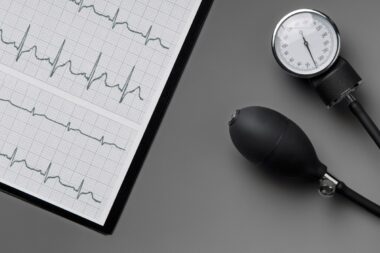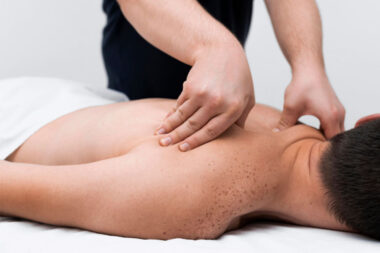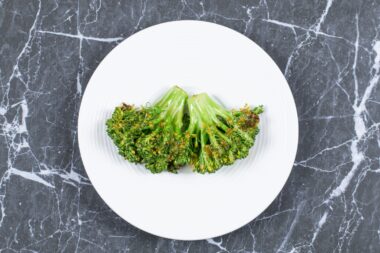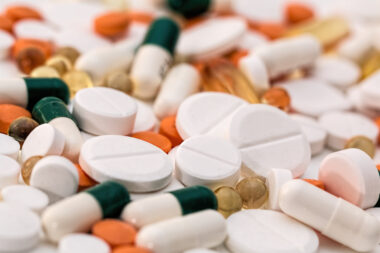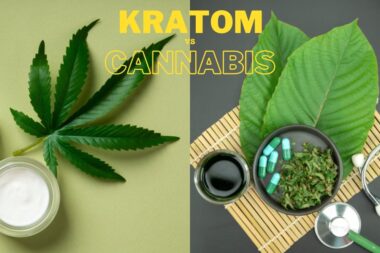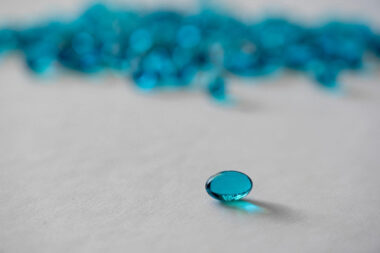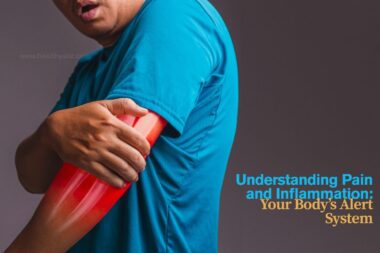Insulin resistance is the most common health disorder in the world. So common, in fact, that you likely have it. It may very well be the health epidemic you’ve never heard of — although it is starting to garner more and more attention.
As the underlying cause for a myriad of chronic diseases (Alzheimer’s, cancer, diabetes, heart disease, etc.) and adverse health conditions (obesity, hypertension, migraines, etc.), it’s important you do all you can to resist becoming insulin resistant.
In metabolic scientist Benjamin Bikman’s book, “Why We Get Sick,” he says half of all U.S. adults are known to be insulin resistant.1 But tragically, this number could be as high as 88% of adults.2
Defining Insulin Resistance
Simply put, insulin is a hormone naturally produced in the pancreas (except for those with type 1 diabetes). Its main role is to regulate our blood glucose levels. But unlike most other hormones, insulin affects every cell in every body tissue.
We become insulin resistant when our cells have a reduced response to the hormone insulin, which leads to sustained high glucose levels. This is very dangerous because our bodies need insulin to remove the glucose from the blood and to help us maintain normal blood glucose levels. Otherwise, the potential of being beset by chronic diseases and other health disorders previously mentioned greatly increases.
And with all of the recent emphasis on health, there’s never been a better reason to prevent or overcome pre-existing health conditions, which have been proven to compromise people’s health and immune systems.
It’s time we shift our paradigm and put more emphasis on maintaining healthy insulin levels. For example, if doctors looked at insulin rather than glucose levels, Bikman says doctors could diagnose type 2 diabetes up to 20 years sooner.
Yes, it’s time we start paying more attention to the signs of insulin resistance and taking steps now to change some of our lifestyle choices to greatly reduce the chance of becoming sick.
9 Warning Signs of Insulin Resistance
Want to know if you’re insulin resistant? Here are 9 signs to look for:
- Do you have more fat around your belly than you’d like?
- Do you have high blood pressure?
- Do you have a family history of heart disease?
- Do you have high levels of blood triglycerides?
- Do you retain water easily?
- Do you have patches of darker-colored skin or little bumps of skin (“skin tags”) at your neck, armpits, or other areas?
- Do you have a family member with insulin resistance or type 2 diabetes?
- Do you feel tired a couple of hours after eating lunch?
- Women: Do you have gestational diabetes or polycystic ovarian syndrome (PCOS)?
OR Men: Do you have low testosterone (erectile dysfunction)?
If you answered yes to two or more of these questions, it’s likely you’re insulin resistant. And it’s time to do something about it.
3 Lifestyle Changes to Make NOW
There are a number of lifestyle changes you can make starting today to resist becoming or to stop being insulin resistant. Here are the top 3:
1. Cut the carbs
Yes, we love our pasta, rice, mashed potatoes, breads, cold cereal, soda, and donuts. Way, way too much of the food we’re overeating comes in the form of refined and insulin-spiking carbohydrates, such as sugar. Instead of giving them all up at once, pick one this week and add another next week, and so on.
Perhaps one of the easiest first steps to take is eliminating the super sugary soda drinks from your diet.
Sugar, which is half glucose and half fructose, has a direct impact on our insulin. As our consumption of sweetened food has increased, says Bikman, so has the number of cases of insulin resistance.
Sugar also increases what’s known as “oxidative stress”3 — which is a broad term that refers to damage harmful molecules inflict upon a cell. The greater amount of sugar consumed, the greater the oxidative stress.4
But diet sodas may need to be avoided, as well. Just because artificial sweeteners taste like sugar yet provide few or no calories and no nutrition doesn’t by any means make them a healthy choice. In fact, research shows artificial sweeteners actually increase the risk of insulin resistance.
One study revealed those who daily drink an artificially sweetened (diet) soda have a 36% greater chance of developing metabolic syndrome (defined as having insulin resistance plus any two of the following health conditions: high blood pressure, dyslipidemia, central obesity, or low levels of protein in the urine).
But it gets even worse: drinking diet sodas every day makes you 67% more likely to develop type 2 diabetes.5
Hopefully, that data is sufficient to motivate you to immediately reduce, if not eliminate, consuming sugary drinks as your first step. Once you’ve mastered that healthy lifestyle change, then work on reducing processed foods and carbs.
Despite many health experts touting the importance of eating protein and carbohydrates, Bikman says science shows that by prioritizing protein and healthy dietary fats and limiting our consumption of refined carbohydrates, human health, and metabolism thrive, and insulin resistance is resolved.
“Humans have NO biological needs for any carbohydrates. We can literally eat ZERO carbs and thrive,” says Bikman.
A huge benefit of reducing carbohydrates and focusing more on proteins and healthy dietary fats is it’ll drastically reduce and keep your insulin levels low. This in turn will allow you to not only burn fat more efficiently but also feel more energetic.
Also read: 10 Simple Diet Tips To Reduce Your Risk of Dementia
2. Practice intermittent fasting
Many of us eat our 3 regular meals daily, but then we’re constantly snacking in between. This puts us in a constant “fed” state and leaves the insulin engine in high gear all day long. Snacking right before bedtime keeps this engine revving and running through the night (now you know what might be causing your restless nights of sleep).
Instead, it’s better to eat early — ideally making breakfast your most robust meal. There’s great wisdom in the adage: “Breakfast like a king, lunch like a prince, and dinner like a pauper.” This advice can help you keep your late-night cravings under control.
For example, eating breakfast around 7 a.m., lunch around noon, and then supper by 5 or 6 p.m. would be a healthy, wise routine. It will do wonders for keeping your insulin levels in check. (Of course, provided you’re making healthy food choices for your meals.)
As you get more comfortable with intermittent fasting, you could compress your “eating window” to as few as 4-6 hours, for even greater health benefits.
For those pressed to take the time to eat a healthy meal, consider a nutritionally complete meal replacement shake like the HLTH Code Complete Meal (developed by Bikman), which offers a science-backed blend of protein, collagen, healthy fats, apple cider vinegar, probiotics, fiber, and vitamins and minerals without any added sugar, extra carbs or artificial ingredients.
3. Get moving!
Yes, that’s an innocuous way to say exercise.
More than 30% of disease-related deaths are attributed to heart disease. One of the commonly cited reasons is lack of exercise (along with smoking, alcohol consumption, obesity, and yes, insulin resistance). Exercise also reduces oxidative stress and can greatly reduce your risk of becoming insulin resistant.
Which exercise is best for you? Should you walk, run, bike, hike, swim, or lift? Bikman coyly answers “The one that you’ll do.” In other words, just do something (and make sure it’s sufficiently strenuous!) other than sitting at a desk all day for your work and then on the couch all evening binging on Netflix (with diet soda and processed foods by your side).
Ideally, a combination of aerobic and anaerobic is best. The latter is typically more difficult to get to for many, but even weight training just twice weekly will yield great results.
But be patient with results, which only come after consistently exercising over time. The good news is any kind of exercise helps you reduce insulin resistance because it removes glucose from the blood without the use of insulin.
It goes without saying the more vigorous your exercise, the better the payoff (including insulin sensitivity). Bikman warns against post-workout sports drinks. Many falsely believe adding glucose after a workout is essential. It’s not. In fact, it may cause you to actually lose some of the insulin-sensitizing improvements of the exercise.6
Also read: Is Salsa Good For You? Pros And Cons of Salsa
Final Thoughts
By understanding the dangers of insulin resistance and recognizing the signs of it in ourselves, we can empower ourselves to do something about it. “Fighting the resistance,” says Bikman starts with reducing carbs (especially sugar and processed foods), intermittent fasting, and exercise. And while you’re at it, be sure to get sufficient sleep too.
Sources:
1 Menke, A., et al., Prevalence of and trends in diabetes among adults in the United States, 1988-2012. JAMA, 2015. 314(10): p. 1021-9; McClain, A.D., et al., Adherence to a low-fat vs. low-carbohydrate diet differs by insulin resistance status. Diabetes Obes Metab, 2013. 15(1): p. 87-90.
2 Araujo, J., J. Cai, and J. Stevens, Prevalence of Optimal Metabolic Health in American Adults: National Health and Nutrition Examination Survey 2009-2016. Metab Syndr Relat Disord, 2019. 17(1): p. 46-52.
3. Diniz, Y.S., et al., Effects of N-acetylcysteine on sucrose-rich diet-induced hyperglycaemia, dyslipidemia, and oxidative stress in rats. Eur J Pharmacol, 2006. 543(1-3): p. 151-7; Blouet, C., et al., Dietary cysteine alleviates sucrose-induced oxidative stress and insulin resistance. Free Radic Biol Med, 2007. 42(7): p. 1089-97; Feillet-Coudray, C., et al., Oxidative stress in rats fed a high-fat high-sucrose diet and preventive effect of polyphenols: Involvement of mitochondrial and NAD(P)H oxidase systems. Free Radic Biol Med, 2009. 46(5): p. 624-32.
4. Hu, Y., et al., Relations of glycemic index and glycemic load with plasma oxidative stress markers. Am J Clin Nutr, 2006. 84(1): p. 70-6; quiz 266-7.
5. Nettleton, J.A., et al., Diet soda intake and risk of incident metabolic syndrome and type 2 diabetes in the Multi-Ethnic Study of Atherosclerosis (MESA). Diabetes Care, 2009. 32(4): p. 688-94.
6. Taylor, H.L., et al., Post-exercise carbohydrate-energy replacement attenuates insulin sensitivity and glucose tolerance the following morning in healthy adults. Nutrients, 2018. 10(2).

Jeffery E. Pizzino, APR, loves sharing stories about health and technology that help improve people’s lives. As a spin-free public relations professional since 1987, he’s committed to upholding truth, transparency and authenticity in all his writing. You can learn more about what he does at https://authenticitypr.com.



